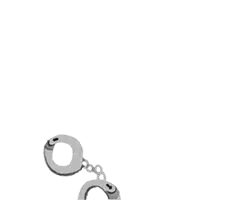3Definition of manipulation
In this Act, unless the context otherwise requires, the term manipulation, in relation to an animal, means, subject to subsections (1A) to (3), interfering with the normal physiological, behavioural, or anatomical integrity of the animal by deliberately—
- subjecting it to a procedure which is unusual or abnormal when compared with that to which animals of that type would be subjected under normal management or practice and which involves—
- exposing the animal to any parasite, micro-organism, drug, chemical, biological product, radiation, electrical stimulation, or environmental condition; or
- enforced activity, restraint, nutrition, or surgical intervention; or
- exposing the animal to any parasite, micro-organism, drug, chemical, biological product, radiation, electrical stimulation, or environmental condition; or
- depriving the animal of usual care;—
The term defined by subsection (1) includes the killing of an animal (other than an animal in a wild state) for the purpose of interfering with the animal's body or its tissues in a manner specified in that subsection.
The term defined by subsection (1) also includes the breeding or production of an animal using any breeding technique (including genetic modification) that may result in the birth or production of an animal that is more susceptible to, or at greater risk of, pain or distress during its life as a result of the breeding or production.
The term defined by subsection (1) does not include—
- any therapy or prophylaxis necessary or desirable for the welfare of an animal; or
- the killing of an animal by the owner or person in charge as the end point of research, testing, or teaching if the animal is killed in such a manner that the animal does not suffer unreasonable or unnecessary pain or distress; or
-
- the hunting or killing of any animal in a wild state by a method that is not an experimental method; or
- any procedure that the Minister declares, under subsection (3), not to be a manipulation for the purposes of this Act.
Subsection (1A) does not apply to any killing of an animal that is carried out by any person—
- while exercising powers under the Biosecurity Act 1993 for the purposes specified in section 121(1A) of that Act; or
- while exercising powers or performing functions for the purposes of a response activity carried out under the Biosecurity Act 1993, being an activity undertaken after any event described in subsection (2B) and for any purpose described in subsection (2C).
The events concerned are—
- the detection of an unwanted organism not previously known to be present in New Zealand:
- the appearance of different effects of an unwanted organism known to be present in New Zealand and capable of being eradicated.
The purposes concerned are—
- to investigate the unwanted organism:
- to minimise the impact of the unwanted organism on natural and physical resources, human health, and overseas market access for New Zealand products:
- to control the spread of the unwanted organism:
- to reduce the geographical distribution of the unwanted organism:
- to eradicate the unwanted organism.
The Minister may from time to time, after consultation with the National Animal Welfare Advisory Committee and the National Animal Ethics Advisory Committee, declare any procedure, by notice
, not to be a manipulation for the purposes of this Act.The Minister must, in deciding whether to publish a notice under subsection (3) in relation to a procedure, have regard to the following matters:
- the nature of the procedure; and
- the effect that the performance of the procedure will or may have on an animal's welfare; and
- the purpose of the procedure; and
- the extent (if any) to which the procedure is established in New Zealand in relation to the production of animals or commercial products; and
- the likelihood of managing the procedure adequately by the use of codes of welfare or other instruments under this Act or any other Act; and
- the consultation conducted under subsection (3); and
- any other matter considered relevant by the Minister.
A notice under subsection (3) is secondary legislation (see Part 3 of the Legislation Act 2019 for publication requirements).
Notes
- Section 3(1): amended, on , by section 6(1) of the Animal Welfare Amendment Act (No 2) 2015 (2015 No 49).
- Section 3(1A): inserted, on , by section 6(2) of the Animal Welfare Amendment Act (No 2) 2015 (2015 No 49).
- Section 3(1B): inserted, on , by section 6(2) of the Animal Welfare Amendment Act (No 2) 2015 (2015 No 49).
- Section 3(2)(c): repealed, on , by section 6(4) of the Animal Welfare Amendment Act (No 2) 2015 (2015 No 49).
- Section 3(2A): inserted, on , by section 6(3) of the Animal Welfare Amendment Act (No 2) 2015 (2015 No 49).
- Section 3(2B): inserted, on , by section 6(3) of the Animal Welfare Amendment Act (No 2) 2015 (2015 No 49).
- Section 3(2C): inserted, on , by section 6(3) of the Animal Welfare Amendment Act (No 2) 2015 (2015 No 49).
- Section 3(3): amended, on , by section 3 of the Secondary Legislation Act 2021 (2021 No 7).
- Section 3(5): inserted, on , by section 3 of the Secondary Legislation Act 2021 (2021 No 7).


